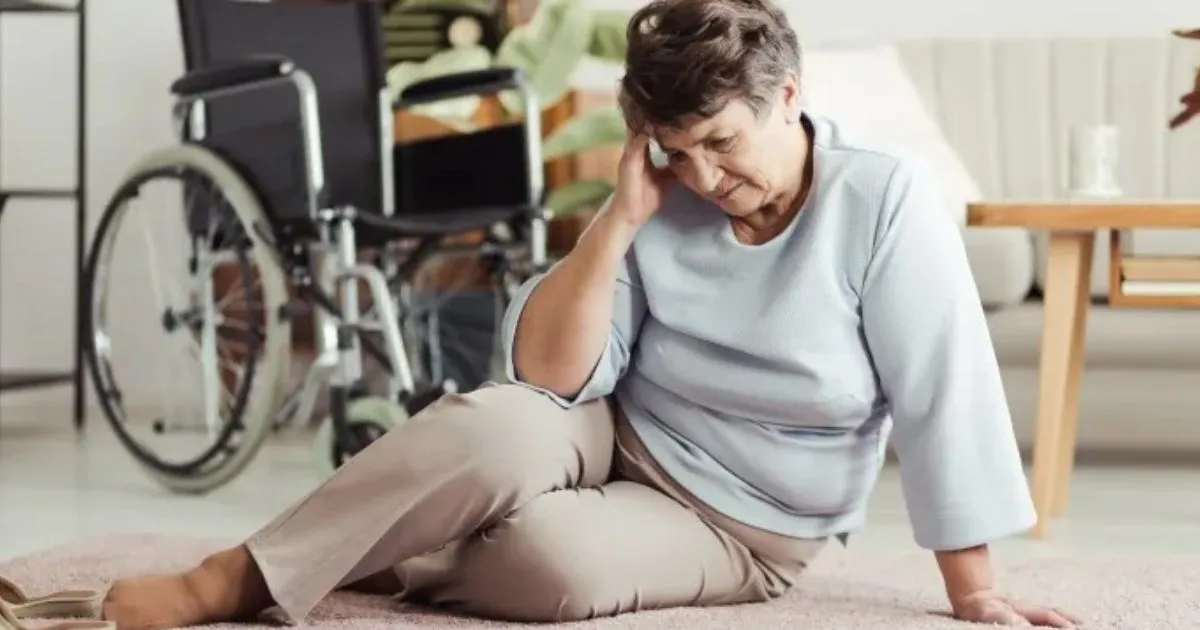
Every 11 seconds, an older adult is treated in an emergency room for a fall-related injury. If that statistic makes you pause, you’re not alone. Falls are the leading cause of injury for adults 65 and older, according to the National Institute on Aging (1). But here’s the encouraging news: most falls are preventable.
National Falls Prevention Awareness Week (September 22–26) reminds us that a few thoughtful changes can make all the difference between a confident stride and an unexpected tumble.
Why Do We Fall?
Falls rarely happen out of nowhere. They’re usually the result of multiple factors working together, like a perfect storm you’d rather avoid. Understanding these culprits is your first line of defense.
- When Your Head Spins: That dizzy feeling isn’t just annoying—it’s dangerous. Whether it’s from dehydration, medication side effects, or conditions like vertigo, dizziness significantly increases fall risk. Don’t brush it off as “just getting older.” Talk to your doctor about what might be causing it.
- The Stand-Up Struggle: Ever felt lightheaded when getting up too quickly? That’s orthostatic hypotension—your blood pressure dropping faster than your body can adjust. The fix is surprisingly simple: take your time standing up, stay well-hydrated, and give your body a moment to catch up.
- Seeing Clearly Matters: When was your last eye exam? Outdated prescriptions, cataracts, or glaucoma can turn familiar spaces into obstacle courses. Regular eye check-ups aren’t just about reading better—they’re about helping you walk safely.
- Strength from Within: Weak muscles, especially in your legs and core, make every step less stable. Chronic pain doesn’t help either. The good news? Gentle exercises like Tai Chi or yoga can rebuild both strength and confidence.
Your Fall Prevention Toolkit
Small changes can have big impacts. Here’s what works:
- Keep a complete list of every medication you take and share it with every healthcare provider. A simple pill organizer can prevent dangerous mix-ups.
- As we age, our thirst signals weaken, but our need for water doesn’t. Dehydration is a sneaky cause of dizziness and confusion. Keep water nearby and sip regularly throughout the day.
- Exercise doesn’t mean running marathons. It means staying strong enough to trust your own two feet. Johns Hopkins Medicine (2) suggests specific balance and strength exercises designed for seniors—gentle movements that pack a powerful punch against falls.
- Alcohol affects balance and can interact dangerously with medications. If you choose to drink, moderation is key for staying steady.
Transform Your Home into a Safe Haven
Your home should be your sanctuary, not a hazard zone. A few strategic changes can eliminate most fall risks:
Light the Way
Good lighting isn’t a luxury—it’s a necessity. Brighten hallways, staircases, and bathrooms. Motion-sensor lights are particularly helpful for those middle-of-the-night trips.
Clear the Clutter
That stack of magazines by your chair or the loose rug in the hallway might seem harmless, but they’re accidents waiting to happen. Create clear pathways throughout your home.
Bathroom Safety
Install grab bars near the toilet and in the shower. They’re not signs of weakness—they’re smart safety tools that provide confidence and stability.
Nighttime Navigation
Keep a clear, well-lit path to the bathroom. Consider a bedside commode for convenience and arrange furniture so you won’t bump into it in the dark.
The Power of Prevention
Healthcare providers use the “4 Ps” approach to fall prevention:
- Pain management keeps you comfortable and stable
- Proper positioning ensures your seating and sleeping arrangements support good balance
- Smart placement keeps everyday items within easy reach
- Personal care assistance reduces rushing and stress
Regular Check-ups: Your Safety Net
Don’t wait for problems to find you. Schedule regular appointments for:
- Vision and hearing screenings
- Foot care with a podiatrist
- Dental health
- Overall health assessments
Early detection and treatment of issues can prevent them from becoming fall hazards.
The Bottom Line
Balance problems and muscle weakness top the list of fall causes, but they don’t have to top your list of worries. Regular physical activity, smart home modifications, and proactive healthcare can keep you steady and independent.
Remember: asking for help isn’t giving up—it’s taking charge. Whether that means using a walking aid, installing safety equipment, or simply having someone check on you regularly, every step toward prevention is a step toward continued independence.
Falls may be common, but they don’t have to be inevitable. With the right knowledge and a few practical changes, you can stay confident, steady, and safely on your feet.
Your Partner in Safe, Independent Living
At Trustwell Living, we understand that reducing the risk of falls isn’t just about safety—it’s about preserving your independence and peace of mind. Our senior living communities are thoughtfully designed with reducing fall risks in mind, featuring well-lit pathways, grab bars, emergency response systems, and caring staff trained in senior safety. We combine personalized care with engaging activities and fitness programs that build strength and confidence.
If you’re ready to explore a community where safety meets independence, we’re here to help. Find a Community near you and discover how Trustwell Living can support your journey toward secure, fulfilling senior living.
Disclaimer: This article is for informational purposes only and does not constitute medical, legal, or financial advice. It’s recommended to consult with a medical, legal, or financial professional for your specific circumstances.
References: (1) “Falls and Fractures in Older Adults: Causes and Prevention”, by the National Institute on Aging, published September 12, 2022, on https://www.nia.nih.gov/
(2) “Fall Prevention: Balance and Strength Exercises for Older Adults”, by Lora Stutzman, PT, published on https://www.hopkinsmedicine.org/
https://www.hopkinsmedicine.org/health/wellness-and-prevention/fall-prevention-exercises